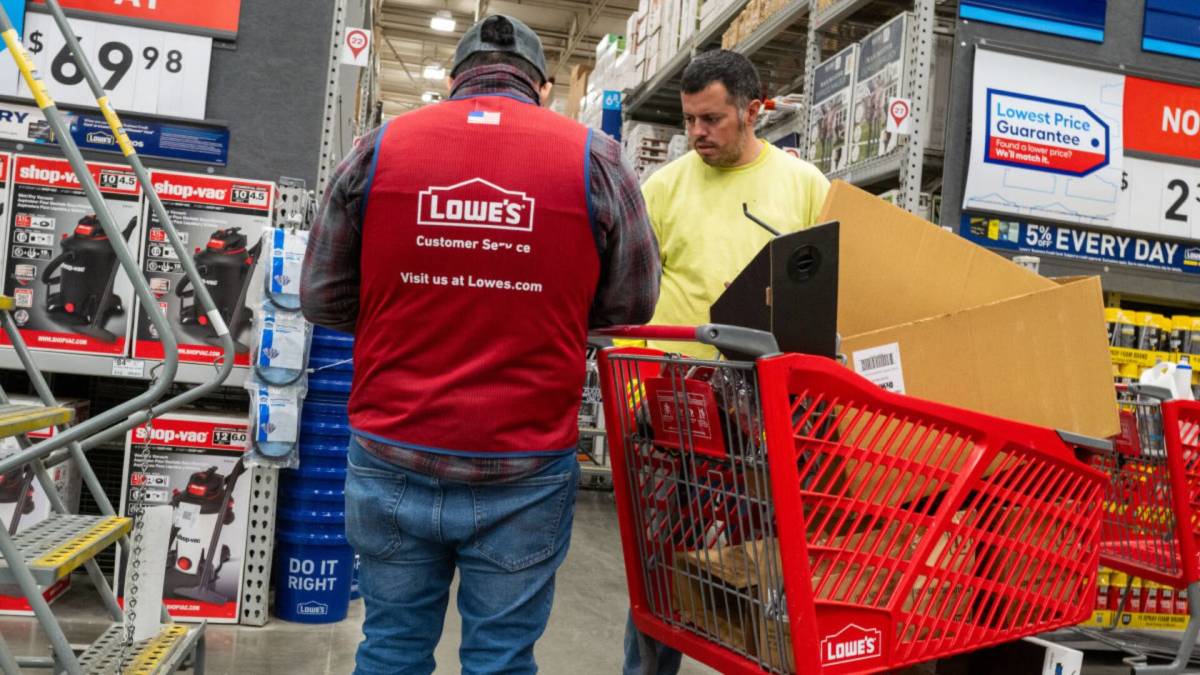Like many other retailers nationwide, Lowe’s (LOW) has been struggling to attract price-conscious customers who are concerned about inflation and tariffs. This has contributed to it facing lower-than-expected sales in the first three months of 2025.
However, the home improvement retailer recently saw a glimmer of hope, as its latest earnings report revealed that its comparable sales during the second quarter of this year increased by 1.1% year-over-year.
The average amount of money customers spent per purchase increased by 2.9%, but the number of comparable transactions declined by 1.8%.
Related: Home Depot raises red flag about customer behavior in stores
Despite higher sales, customers are still avoiding stores. Recent data from Placer.ai revealed that overall customer visits to Lowe’s stores decreased by 3.8% year-over-year during the quarter, while its top rival, Home Depot, saw its visits only decline by 2.2%.
The decrease in foot traffic comes during a time when the retail giant is facing a nationwide boycott from consumers over its business practices, which kicked off on Aug. 1 and will last until the end of the month.

Image source: Spencer Platt/Getty Images
Lowe’s execs flag a major problem affecting customer behavior
During an earnings call on Aug. 21, Lowe’s flagged that the current state of the U.S. housing market is having an impact on sales, as it is causing consumers to delay tackling large home improvement projects and instead focus on smaller projects that involve repairs, remodeling, and maintenance.
“We’re still working through some short-term challenges, including elevated mortgage rates, cautious consumer affordability remains a pressure point that results in the lock-in effect that we’ve been seeing and also a depressed housing market,” said Lowe’s Chief Financial Officer Brandon Sink during the call.
The average 30-year mortgage rate is has surpassed 6%, and consumers are purchasing new homes at a slow pace.
Related: Target customers may soon flee to Walmart due to alarming change
In July, existing-home sales increased by 2% month-over-month, while total housing inventory spiked by 0.6%, according to a recent report from the National Association of Realtors.
The report also found that the median existing-home sales price increased by 0.2% year-over-year, reaching $422,400.
“Unless mortgage rates move lower and stay there, the housing market will remain slow and regionally uneven, with locked-in sellers and rising inventory limiting both appreciation and the pace of home sale,” said Keller Williams Chief Economist Ruben Gonzalez in a statement to TheStreet.
Lowe’s takes drastic action to address a growing threat to sales
As Lowe’s navigates the ripple effects of an uncertain housing market, it is also battling the growing threat of President Donald Trump’s tariffs on multiple countries. Tariffs are expected to result in higher prices for everyday goods, which is causing consumers to cut their spending.
According to a recent survey from Harris Poll and Bloomberg News, 3 in 5 Americans said they are reducing their spending due to concerns about a potential recession.
More Retail:
- Target has another big problem amid alarming customer behavior
- Dollar General announces big store change to win back customers
- Amazon pulls the plug on a free service for customers
During the earnings call, Lowe’s CEO Marvin Ellison said that the company has been managing tariffs by diversifying where it sources its products.
“We have done, in my estimation, an excellent job of working cross-functionally relative to looking for diversification,” said Ellison. “I mean, right now, roughly 60% of the goods we source are coming out of the U.S. And it wasn’t that way seven years ago.”
He also said that Lowe’s stores have been relying on “dynamic” pricing, where prices for products “fluctuate up and down” based on multiple factors, to help lessen the blow of higher costs associated with tariffs.
“Pricing is incredibly dynamic,” said Ellison. “And it’s driven a lot by a set of business rules that we have internally based on competitive pricing, and based on our own internal data on elasticity. And so we understand what our customers want (and) what they don’t want, and we understand the breakpoint on units when you start to price in a way that you see demand go down. And so we’re managing this literally real-time because this is uncharted waters.”
Related: Amazon shuts down free service for customers after 14 years
#Lowes #struggles #fix #customer #problem